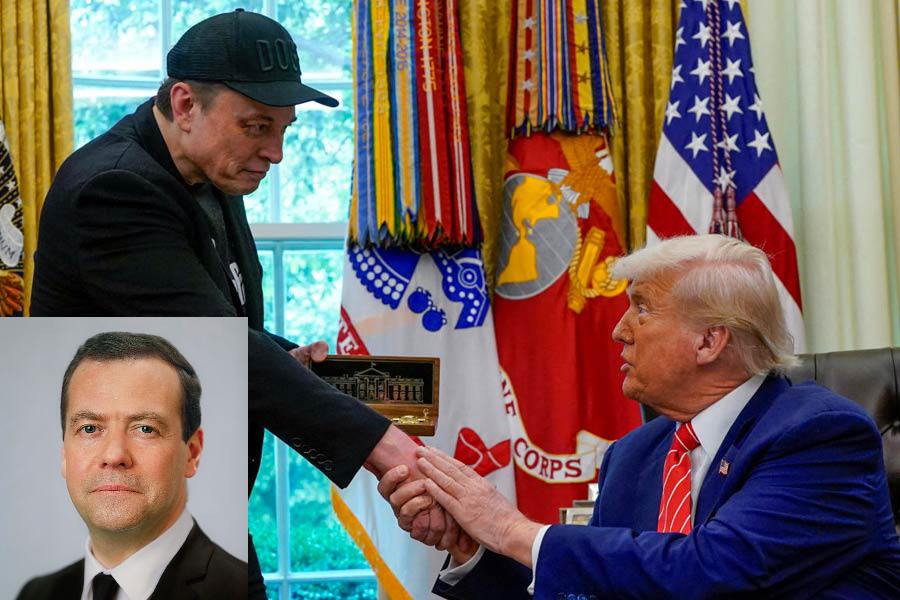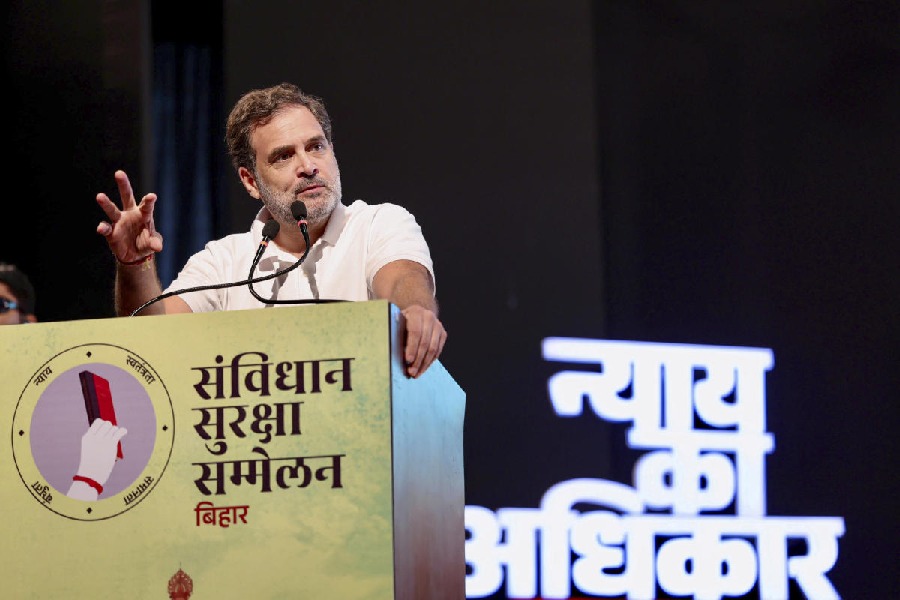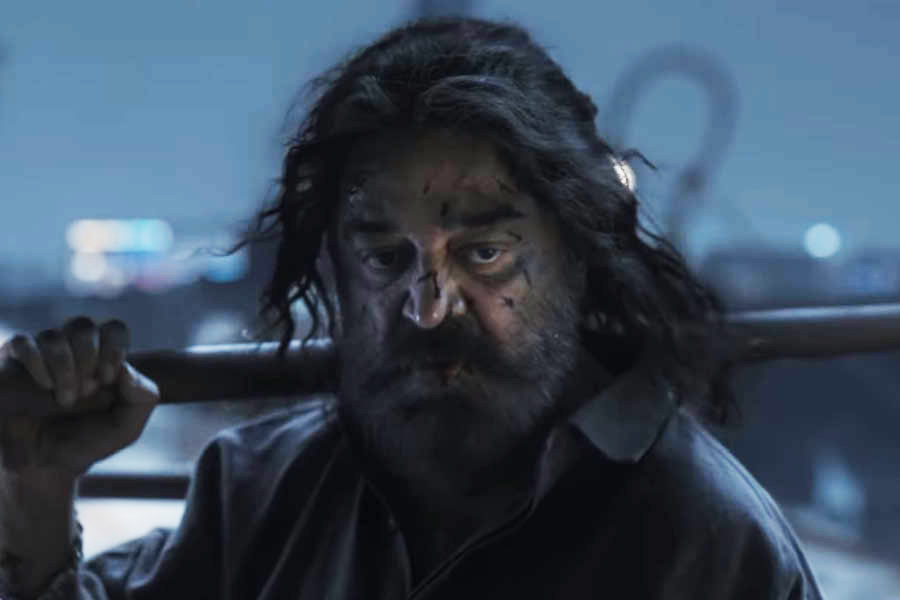
When young students first start to study art history they often make the elementary mistake of putting different movements and artists into quite rigid chronologies, forgetting that people and events in history - like colour on a canvas - often bleed and dribble into each other. For a long time there was a certain accepted progression that mid-20th-century Western art followed: before the Second World War there were the Europeans who were important, Picasso, Matisse, Klee and the Surrealists, followed by the shift of power from Paris to New York, when Abstract Expressionism was arrived at and the great Abs Ex painters exploded across the art firmament; then, counter to the Abs Ex gang came the Pop Art wallas, Rauschenberg, Johns, Warhol, followed by a whole host of others, themselves followed by the various art movements of the 1960s and then the 1970s and so on, forming a neat and orderly graph. Convenient as this was, to put on a timeline in a book, reality was somewhat different.
Kandinsky and Rodchenko, and then Klee, and then the Bauhaus crew, and the soon overlapping Georgia O'Keeffe had all pushed the envelope of non-representational painting well before the 1940s. Marcel Duchamp and the Dadaists had already challenged the gallery-oriented, market-oriented narrative of the 'maestro' and 'masterpiece' with great verve and humour, Man Ray had exploded (among many other things) the fetish of the 'painterly hand', well before Pop Art spilled out from a quickly cut open can of Campbell's tomato soup. Abs Ex may have gained traction only after WW2, but people such as Arshile Gorky and Josef Albers were already pushing the next generation of young painters into jettisoning cubist distortions of actual organic and inorganic forms and going for 'pure' abstraction, for undiluted mark-making. Even as the New York art establishment began to recognize and champion Jackson Pollock, Mark Rothko, Willem De Kooning and others, already an only slightly younger generation was starting to tug at the carpet under the feet of the Abs Ex painters.
By the early 1950s, Rauschenberg was hanging out with composer John Cage and his partner, choreographer Merce Cunningham, at Black Mountain College in North Dakota and opening up his mind in ways that were very different from what the Abs Ex people were thinking. By the mid-1950s, several different pots of artwork, some of them highly 'experimental', were bubbling in different dilapidated kitchens across America and a western Europe still licking its wounds from the ravages of the war. While the Abs Ex painters were in full flow, so were the duo of Rauschenberg and Jasper Johns, later joined by Andy Warhol, Roy Lichtenstein, James Rosenquist and Claes Oldenburg, all of whom loosely formed what is labelled American Pop Art. In West Germany, Joseph Beuys and associated artists had already begun to change the game with the first Documenta show at Kassel. People who would do huge public works such as Christo, massive earthworks in landscape like Robert Smithson, and the single parent of video art, Nam June Paik, were all about to start their dialogue with the (then largely Western) public.
I could have seen the big Abstract Expressionist retrospective at the Royal Academy at several points over last autumn but, as luck would have it, I managed to make it on one of the last days of the show, with a trip to Tate Modern to catch the newly opened retrospective of Robert Rauschenberg just a few days later. To be able to immediately compare and contrast these two connected but opposed bodies of work was a piece of great good fortune.
The show at the RA repeatedly reminds us that it is the first big UK retro of the Abs Ex painters since 1959. This fact is startling and it leads to a bifurcating conclusion, one that eats its own tail, so to speak. On the one hand, it speaks of ubiquitousness of Abs Ex as the canonical narrative of post-war art internationally, the grand scale, the primacy of colour, the heroic (usually male) painter making these feverish or highly meditative marks, leaving layered pigment spoors of his body on the canvas, this 'model' that has been the most copied by artists outside the Western world over the last 60-odd years; in other words, who needs to see another Pollock, Rothko or De Kooning when they are so present everywhere and when there are so many sub-abstractionists about? On the other hand, it also speaks of the insularity of the UK art establishment, an insularity that (till the early 90s at least) is not uncoupled with an inferiority complex vis-à-vis the brash, loud, indefatigably inventive art cousins from across the pond; that is, why should we big up this dated form of picture-making when we have so many great artists of our own, doing everything from modern figurative to abstraction to Pop to dodgy suspended sharks and soiled beds?
Whatever the logic for the 57-year-long ignore, the RA show makes some amends with its size and spread. It's a great pleasure to be confronting Pollock's manic splatter, entire canvases, rectangular islands encrusted as if by deliberate coloured bird-droppings from very intelligent avian beings, to be immersed in the chroma- dhrupad of Rothko, to let the eyes be led a dance again by the starkly beautiful black and white slashes and whorls of Franz Kline and Robert Motherwell. The curators of the show make the case that these painters were painting at a time of great anxiety for the human race, when the Cold War and the various mid-century upheavals held us hostage from many different directions, and that a great humanist vision actually comes through the most controlled Ad Reinhardt as it does in the craziest Willem De Kooning. I love this work, but I'm far from sure about this argument. Whatever its beginnings, after a while Abs Ex provided yet another closed club, yet another notional, canonical top table, with all the suspect money and power of the millionaire collectors attached. Sure, most of the brilliant painters in this show retain a sense of play, and of great meditative gravitas, but ultimately they could not stop Abstract Expressionism from becoming what it did - a fetishistic commodity art divorced from the reality around it.
For the connection to the real, to the immediate, to the thorny, barbed wired daily experience of mid-20th century America, for the belly laughs and a very different meditation you have to go to Robert Rauschenberg. The eye, the sheer joy and intelligence of this man, one of the greatest artists (and not just of the 20th century), is hard even to outline in the space available here. But let me just recount one thing that struck me when I first discovered Rauschenberg as a young art student in late 1970s America, that of all these mostly white and mostly male painters who made up the American Art All-stars of the 50s, 60s, 70s and the 80s, RR was the one who seemed to have internalized the chaos and craziness of street Calcutta without ever having been there. The trousers stuck to the canvas and painted over, the goat with a tyre around its middle, the combine painting Bed, splattered with paint and gestures brazenly hijacked from the Abs Ex guys yet taken to another level with the iconic pillow and the quilt, the controlled pictorial noise of the big silk screen 'collages' all, still, make electric sense in today's world, and light up connections across widely different cultures. There is the poetry of chance married to rigorous looking, great hedonism of material leavened by monkish self-denial of any self-indulgence.
Looking at contemporary art, Indian or otherwise, I'm often struck by what I call 'strategic visual amnesia'. The works presented often make no acknowledgment of their debt to what has gone before: it's as if people like Claes Oldenburg or Cindy Sherman - to mention just two artists - had never existed, never produced any work. Looking at Rauscehnberg's huge range, from the all black canvases of the early 1950s to the gossamer constructions of the Hoarfrost series, the spiky combines, the hypnotic silk screen blow-ups, the performance and video art, the textile based work made in Ahmedabad in the mid-1970s, you realize here is someone who is at once so open and generous about the debts he owes his predecessors and yet such is his discipline and inventiveness that so many people who've followed him will have no choice but to acknowledge how much he opened their eyes, hearts and minds. As I leave the Rauschenberg show, I get word on my mobile that John Berger has died at the age of 90. A friend who loves Berger's writing sends me this line which makes so much sense in the context of both the shows I have just seen: "The function of the work of art," Berger sums up (Max) Raphael, "is to lead us from the work to the process of creation which it contains."










